Greatstone
August 2021 More than 100 beach chalets, toilets (including a fully-accessible Changing Place toilet), café, concession kiosk and upgraded car parking are to be built at the Coast Drive Car Park by Folkestone and Hythe District Council. Find out more

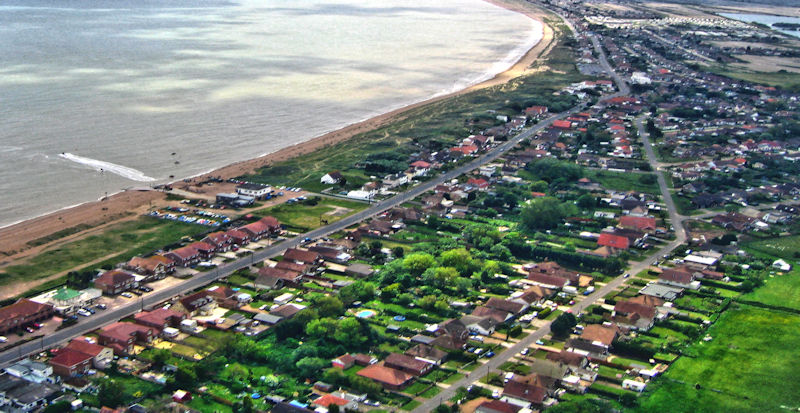
Aerial View of Greatstone, with Greatstone Lakes top right , RNLI and Varne Boat Club left of centre ( Ack. 36)
The village lies between farm land and a nature reserve to the west and the English Channel to the east. It has a fine sandy beach, popular with bathers and wind surfers alike.
Greatstone is centered around Dunes Road, extending, generally parallel to the coast, to Clark Road to the north, adjacent to Littlestone. To the south it extends to the south end of Leonard Road, adjacent to Lydd-on-Sea. (see Greatstone Map)
Nearly all its properties are residential with a few shops, local pubs, restaurants, holiday homes and two holiday parks.
Prior to the 1920s there was hardly anything to Greatstone at all. In the 1920s the area was predominantly covered by sand dunes and consisted of just a few properties mainly used as holiday homes. There was widespread development in the 1960s and 1970s, however, leading to the sizable community it is today.
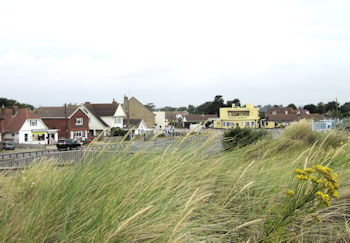
Greatstone, jnct Dunes Road, The Parade and Coast Road
Greatstone has a bus service which goes to New Romney, Ashford and Folkestone and is served by the Romney, Hythe and Dymchurch Railway with a station at Romney Sands at the Romney Sands holiday park. The nearest mainline stations are at Appledore and Ashford.
Greatstone Beach
The sandy beach at Greatstone is quite flat and stretches from north to south for over two miles, and is frequently 'washed' by the tide of the English Channel.
More than anything else, the beach has been the main reason that Greatstone village exists as ever since 'going to the seaside' has been popular, Greatstone beach has drawn holiday makers from far and wide. It provides safe sea bathing in the haven of Romney Bay and miles of fine sand to build all the castles you want.
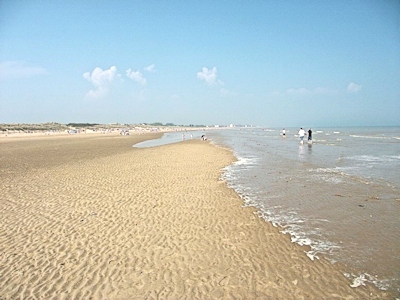
Greatstone Beach
There is a council car park right next to the beach, where there are also some public toilets. Just across the road from the beach there is a pub, a fish and chip shop, fast food outlet and a convenience store.
The fresh winds that often occur in Greatstone, together with the flat sandy beach devoid of groynes, makes the beach popular with a whole range of sports that use the wind. You will find kite surfers on the sea and kite flying, kite boarding, kite buggys and land yachting on the beach. Indeed, Greatstone is deemed to be one of the finest land yachting sites in the UK. Find out more
Sound Mirrors
The Sound Mirrors at Greatstone, also known as Acoustic Mirrors, Concrete
Dishes or Listening Ears, are large concrete structures designed as an early warning system for Britain to detect enemy aircraft.
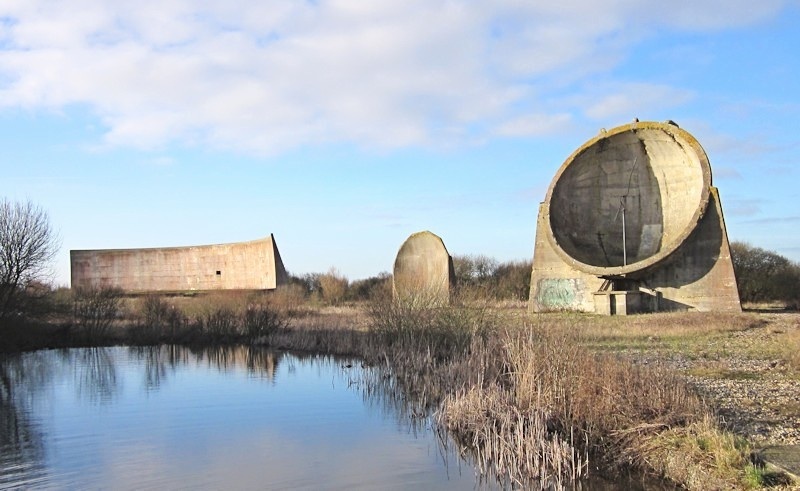
Sound Mirrors at Greatstone
The story of acoustic early warning systems began in 1914 at the start of WW1 when attempts were made to detect the position of the enemy's artillery guns, barrages from which often preceded attacks on the trenches.
There were three designs of mirrors and all three can be seen at Greatstone, located at Greatstone lakes in the north east side of the Dungeness Nature Reserve. Find out more
Greatstone Lakes
Greatstone Lakes are located in the Dungeness National Nature Reserve in Greatstone, to the west of the village.
The two lakes, known as the north and south lakes, are man made in so far as they are old gravel pits. In the 1970's the extraction of the gravel on the now nature reserve was an important industry, supplying gravel for sea defences and road building, amongst other things.
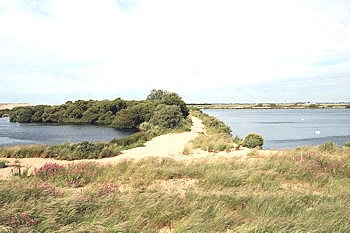
Greatstone Lakes
The lakes were formed by the extraction of a million tons of gravel over four years from an 89-acre site behind the holiday park.
When the extraction ceased, the two large gravel pits were returned to nature and over time they have become two of the most beautiful water-based habitats, covering an area of about 25 acres, for birds, other wildlife, fauna and flora. The area around the lakes attracts walkers, bird watchers and wildlife enthusiasts alike.
![]() Find out more
Find out more
Greatstone Dunes
Greatstone Dunes are typical coastal sand dunes which run parallel to the coastline, separating the beach and sea from the land, along almost the whole length of Greatstone.
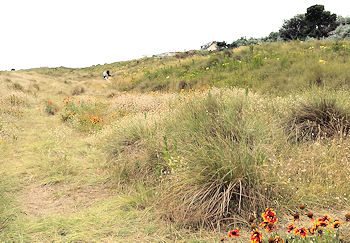
Greatstone Dunes



